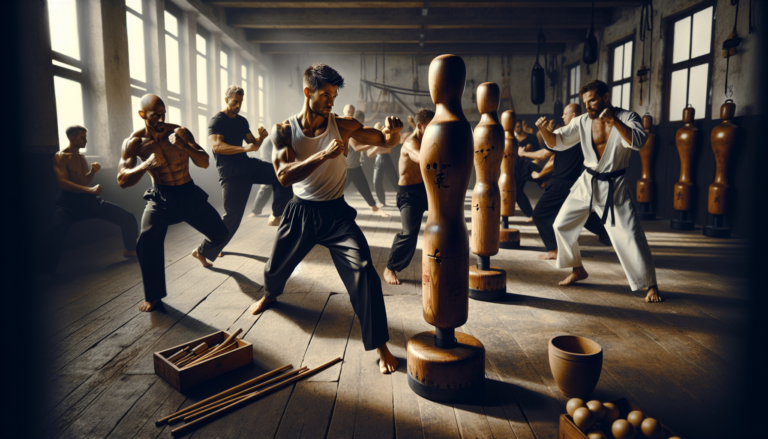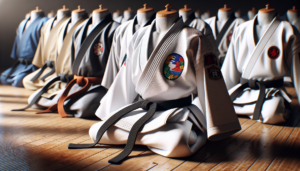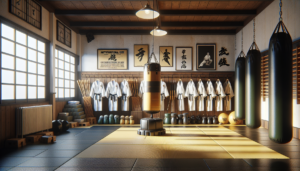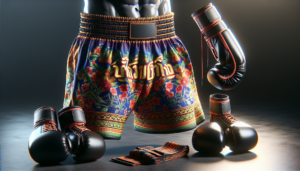Introduction to Wing Chun Martial Arts
Wing Chun is a traditional southern Chinese martial art that focuses on efficiently subduing opponents while minimizing harm. It is known for its quick strikes, close-range combat techniques, and emphasis on practicality and self-defense. Wing Chun martial arts has gained worldwide popularity for its unique approach to fighting and its effectiveness in real-world situations.
What is Wing Chun?
Wing Chun is a martial art system that was developed in southern China during the Qing Dynasty, about 300 years ago. The style is characterized by its economical movements, simultaneous defense and attack, and focus on the center line of the body. Wing Chun techniques are designed to be simple, direct, and efficient, allowing practitioners to neutralize attackers quickly and decisively.
The core principles of Wing Chun include:
- Economy of motion – using minimal movements for maximum effect
- Simultaneous attack and defense – blocking and striking at the same time
- Center line control – protecting and dominating the body’s vertical center line
- Sensitivity and responsiveness – feeling and reacting to an opponent’s energy and movements
Origins and History of Wing Chun
The creation of Wing Chun martial arts is often attributed to Ng Mui, a legendary female Shaolin martial arts master. According to the story, Ng Mui developed Wing Chun after fleeing the destruction of the Southern Shaolin Temple during the Qing Dynasty.
She is said to have based the style on her observations of snake and crane fights, incorporating their quick, precise movements and balance into human fighting techniques. Ng Mui then passed the art to her student Yim Wing-chun, after whom the style is named.
Over time, Wing Chun spread throughout southern China and eventually to Hong Kong, where it gained prominence under the tutelage of Grandmaster Ip Man in the mid-20th century. Ip Man trained many students who went on to popularize Wing Chun internationally, including martial arts icon Bruce Lee.
Wing Chun Techniques and Forms
Wing Chun techniques are built upon a foundation of basic hand movements, stances, and footwork. Students progress through a series of forms and drills designed to develop speed, power, sensitivity, and reflexes. The three primary hand forms in Wing Chun are:
| Form | Description |
|---|---|
| Siu Nim Tao | The first form, which focuses on basic hand techniques and stances |
| Chum Kiu | The second form, which introduces stepping, turning, and simultaneous attack and defense |
| Biu Ji | The third form, which teaches emergency techniques and how to regain the center line |
Basic Techniques in Wing Chun
The fundamental Wing Chun techniques include:
- Punches – fast, compact strikes delivered along the center line
- Palm strikes – open-handed strikes used for close-range attacks
- Kicks – low, quick kicks aimed at the legs and groin
- Trapping – controlling an opponent’s limbs to limit their ability to attack
- Chi Sao – “sticking hands” drills used to develop sensitivity and reflexes
These self-defense techniques are practiced repeatedly to build muscle memory and ensure they can be applied instinctively and effectively in high-pressure situations.
Advanced Wing Chun Forms
In addition to the three empty-hand forms, Wing Chun also includes weapon forms and advanced training tools:
- Wooden Dummy – a training apparatus used to develop precision, power, and positioning
- Long Pole – a form that teaches how to use a staff for both offense and defense
- Butterfly Knives – a dual-knife form that emphasizes coordination and fluidity of motion
These advanced Wing Chun forms build upon the foundations laid by the empty-hand techniques, expanding a practitioner’s skillset and adaptability.
Training Methods in Wing Chun
Wing Chun training typically involves a combination of solo practice, partner drills, and sparring. Students begin by learning the basic stances, footwork, and hand techniques through repetition and correction by instructors.
As they progress, students engage in partner exercises like Chi Sao (sticking hands) to cultivate sensitivity, reflexes, and the ability to flow with an opponent’s energy. Sparring allows students to apply their Wing Chun techniques against resisting partners in a controlled environment.
Throughout training, there is a strong emphasis on relaxation, proper structure, and mental focus. The goal is to develop a strong mind-body connection that allows for instinctive, efficient responses to any situation.
Benefits of Practicing Wing Chun
Engaging in Wing Chun martial arts training offers a wide range of physical, mental, and emotional benefits. Regular practice can improve fitness, self-confidence, discipline, and overall well-being.
Physical Benefits
Some of the physical benefits of Wing Chun include:
- Improved cardiovascular health and endurance
- Increased strength, particularly in the core, legs, and upper body
- Enhanced flexibility and joint mobility
- Better balance and coordination
- Faster reflexes and reaction times
The dynamic, full-body nature of Wing Chun training provides a comprehensive workout that can lead to better overall fitness and athleticism.
Mental and Emotional Benefits
In addition to the physical advantages, practicing Wing Chun also offers significant mental and emotional benefits:
- Increased self-confidence and self-esteem
- Improved focus, concentration, and mental clarity
- Greater discipline and self-control
- Enhanced stress management and emotional regulation
- A sense of belonging and community within the martial arts school
The challenges and triumphs experienced in Wing Chun training can translate into personal growth and development in all areas of life.
Philosophy and Principles of Wing Chun
Beyond the physical techniques, Wing Chun is guided by a set of philosophical principles that shape its approach to combat and self-defense. Understanding and embodying these principles is essential for mastering the art.
Core Principles of Wing Chun
Some of the key principles that underlie Wing Chun techniques include:
- Simplicity – using uncomplicated, direct movements for maximum efficiency
- Practicality – focusing on techniques that are effective in real-world situations
- Economy of motion – minimizing unnecessary movements to conserve energy
- Centerline control – protecting and dominating the body’s vertical center
- Simultaneous attack and defense – blocking and striking at the same time
These principles guide practitioners in developing a streamlined, pragmatic approach to combat that relies on skill and efficiency rather than brute strength.
Philosophical Underpinnings
The Wing Chun philosophy also emphasizes humility, respect, and the responsible use of martial arts skills. Students are taught to avoid conflicts whenever possible and to use their abilities only for self-defense or the protection of others.
There is a strong focus on personal development, self-discipline, and the cultivation of a calm, centered mind. The mental aspects of Wing Chun are considered just as important as the physical techniques.
Ultimately, Wing Chun is about more than just fighting; it is a path to self-improvement, self-understanding, and harmonious living. The martial art becomes a vehicle for developing one’s full potential as a human being.
Notable Wing Chun Practitioners
Throughout its history, Wing Chun has been practiced and taught by many remarkable individuals who have contributed to the art’s development and spread. Some have gained widespread recognition, while others have quietly passed on their knowledge to dedicated students.
Famous Figures in Wing Chun
Some of the most well-known Wing Chun practitioners include:
- Ip Man – the legendary Hong Kong-based master who popularized Wing Chun in the 20th century
- Bruce Lee – martial arts icon and Ip Man’s most famous student
- Wong Shun Leung – one of Ip Man’s top students and a renowned fighter
- William Cheung – another of Ip Man’s students who has taught Wing Chun internationally
- Leung Ting – founder of the Wing Tsun system and a well-known teacher
These influential figures, along with many others, have played key roles in shaping the history of Wing Chun and spreading its teachings around the world.
Modern-Day Practitioners
Today, Wing Chun continues to be practiced by dedicated students and skilled teachers across the globe. Some notable contemporary Wing Chun practitioners include:
- Samuel Kwok – a UK-based teacher and author in the Ip Man lineage
- Philipp Bayer – a German Wing Chun master and founder of the Bayer International Wing Chun Association
- Francis Fong – an American instructor in the Augustine Fong lineage
- Victor Parlati – an Italian master and founder of the Wing Chun Research Association
- Chu Shong Tin – a former student of Ip Man and a respected teacher in his own right
These masters, along with countless other dedicated practitioners, are ensuring that the Wing Chun martial arts tradition remains vibrant and relevant in the modern era. Through their teaching and example, they are passing on the physical skills, philosophical insights, and timeless wisdom of this remarkable fighting art.






